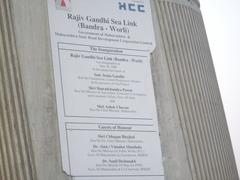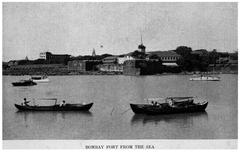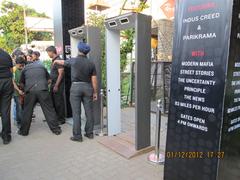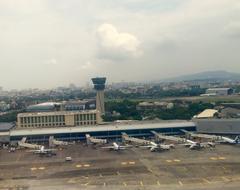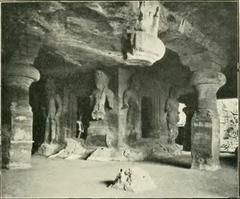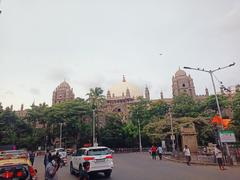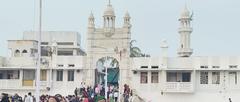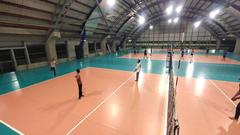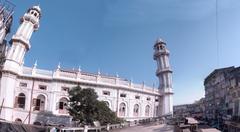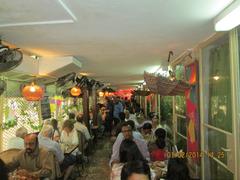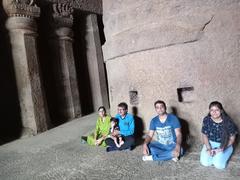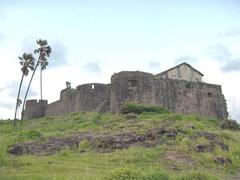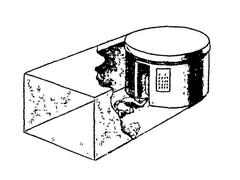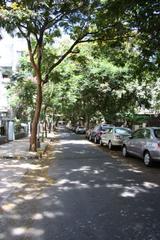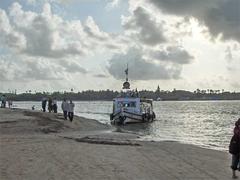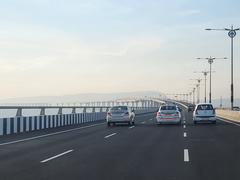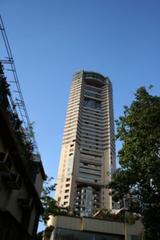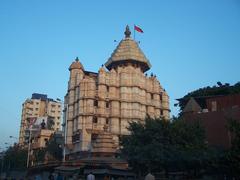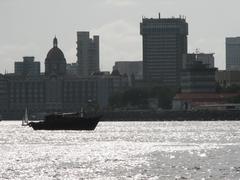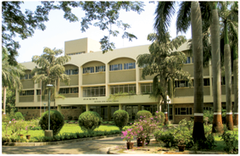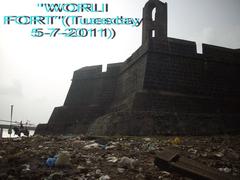Riwa Fort Mumbai: Visiting Hours, Tickets, and Comprehensive Travel Guide
Date: 15/06/2025
Introduction
Riwa Fort, also known as Kala Qilla or Black Fort, stands as a testament to Mumbai’s colonial heritage and urban transformation. Nestled on the banks of the Mithi River in the heart of Dharavi, one of Asia’s largest informal settlements, this 17th-century fort is a hidden gem that offers visitors a rare glimpse into the city’s layered military and social history. Though often overlooked amid Mumbai’s more prominent landmarks, Riwa Fort’s enduring walls, unique architecture, and poignant location invite exploration and reflection on the city’s evolution from a fortified outpost to a sprawling metropolis.
This detailed guide covers the fort’s origins, historical significance, architectural features, current condition, accessibility, visiting hours, travel tips, and nearby attractions to help you plan an informed and enriching visit. For further insights, refer to sources such as Lifestyles of Mumbai, Indianetzone, Today’s Traveller, and Outlook Traveller.
Historical Background
Origins and Construction
Built in the late 17th century under the British East India Company, Riwa Fort was commissioned to secure the northern frontier of British Bombay. Some records cite Governor Gerald Aungier as the initiator, while inscriptions credit John Horne as governor during its completion in 1737. The fort’s strategic placement on the edge of the Dharavi marshes, beside the Mithi River, made it a key defensive outpost to monitor Portuguese and Maratha activity and to protect the Sion Causeway, the main land link to Bombay Island (Indianetzone).
Architectural Features
Riwa Fort’s distinctive boomerang-shaped plan was designed to maximize defensive coverage along the riverbank. Constructed primarily from locally sourced black laterite stone, the fort earned its moniker Kala Qilla. Key features include:
- Thick ramparts and circular bastions: Built to resist artillery and infantry assaults, with elevated vantage points for surveillance.
- Underground tunnels: Ingeniously built to allow the Mithi River to flow beneath the structure, serving both as a hydrological adaptation and a defensive element.
- Internal chambers: Now overgrown and obscured, these were likely used for storage, barracks, or command posts.
- Plaques and inscriptions: Historical plaques provide valuable context for visitors.
Colonial and Military Significance
During the 17th and 18th centuries, Riwa Fort formed part of a broader network of fortifications including Mahim, Sion, and Bandra forts. Its purpose was to guard against encroachment by the Portuguese, Marathas, and other regional powers vying for control over Mumbai’s lucrative trade routes. The fort also served as a boundary marker for the British Bombay Presidency and aided in the administration of the expanding colonial territory (Lifestyles of Mumbai; Today’s Traveller).
Urban Transformation and Present Condition
Decline and Urban Encroachment
With the 18th-century land reclamation projects merging Bombay’s original islands and the city’s expansion northward, Riwa Fort’s military relevance diminished. Over time, Dharavi grew around the fort, leading to encroachment, neglect, and deterioration (The Design Gesture). By the 20th century, the fort was enveloped by informal settlements and subjected to the pressures of rapid urbanization.
Current State and Conservation
Today, Riwa Fort is in a dilapidated condition. While segments of its ramparts and bastions remain, much of the original structure is crumbling or obscured by debris and vegetation. The fort is officially designated a State Protected Monument under the Maharashtra Directorate of Archaeology and Museums, but active restoration efforts are minimal (Treks and Trails). The Zanke family and other local residents have played a role in protecting the site from further encroachment.
Visiting Riwa Fort: Hours, Tickets & Accessibility
Visiting Hours
- General hours: 9:00 AM – 5:00 PM daily.
- Optimal visiting time: Early mornings or late afternoons, especially between November and February, for comfortable weather and good lighting.
Ticket Information
- Entry: Free of charge. Occasionally, donations for conservation are welcomed.
- Official facilities: None—no ticket counters, restrooms, or cafes.
Accessibility
- Location: Near the Dharavi Bus Depot and Dattaguru Housing Society in central Mumbai.
- Transport: Reachable via local train (alight at Dadar, Sion, or Kurla stations), then by auto-rickshaw or taxi. GPS navigation is strongly recommended due to Dharavi’s complex layout.
- Terrain: Uneven, with debris and overgrowth. Wheelchair access is extremely limited.
- Safety: It is advisable to visit during daylight hours, avoid the monsoon season (June–September), and consider hiring a local guide for navigation and context.
Travel Tips and Visitor Guidance
- Footwear: Wear sturdy shoes to handle rubble and slippery ground.
- Essentials: Carry water, a hat, and sunscreen.
- Respect: Be mindful of local residents; avoid intrusive photography and maintain decorum.
- Guides: Official guided tours are unavailable, but local guides can be arranged through community contacts for a more informative and safer visit.
- Photography: Early mornings offer the best light for photos. Always seek permission before photographing residents.
Nearby Attractions
- Dharavi Slum Tours: Gain insights into Mumbai’s vibrant informal economy and diverse communities.
- Mahim Fort: Another colonial fort (3 km west).
- Bandra Fort: Located 6 km north, offering sea views.
- Bombay Castle: The original British stronghold in South Mumbai.
Conservation Challenges and Community Impact
Despite its status as a protected monument, Riwa Fort faces ongoing challenges:
- Encroachment: Expansion of Dharavi’s informal settlements threatens the fort’s boundaries.
- Environmental stress: Pollution from the Mithi River, debris, and monsoon flooding accelerate deterioration.
- Limited awareness: The site is not widely recognized locally for its heritage value.
- Advocacy: Heritage groups stress the need for sensitive restoration and greater community engagement in conservation (Outlook Traveller; Today’s Traveller).
Frequently Asked Questions (FAQ)
Q: What are the visiting hours for Riwa Fort?
A: 9:00 AM to 5:00 PM daily.
Q: Is there an entry fee?
A: No, entry is free.
Q: How do I get to Riwa Fort?
A: Take a train to Sion, Dadar, or Kurla, then continue by auto-rickshaw to Dharavi. Use GPS or consult a local guide.
Q: Is Riwa Fort wheelchair accessible?
A: The uneven terrain and lack of formal paths make accessibility limited.
Q: Are guided tours available?
A: Official government tours are not available, but local guides or heritage groups may offer walks.
Q: Is it safe to visit?
A: Exercise caution due to unstable structures and visit during daylight. Avoid the area during the monsoon.
Visual Resources and Maps
For images, maps, and virtual experiences, see:
- Bijoor.me Riwa Fort gallery
- Financial Express article on Mumbai forts
- Holidify Mumbai forts collection
A Google Maps location of Riwa Fort is recommended for navigation.
Summary and Recommendations
Riwa Fort’s crumbling ramparts and hidden tunnels evoke stories of colonial defense, adaptation, and Mumbai’s ongoing urban transformation. Its unique setting within Dharavi underscores the complex relationship between heritage preservation and urban development. While visitor facilities are minimal, those who approach the site with respect and curiosity are rewarded with a rare, authentic encounter with Mumbai’s history.
Key recommendations:
- Visit during the dry season and daylight hours for safety.
- Use local guides when possible.
- Support heritage conservation by raising awareness and respecting the site.
- Pair your visit with other nearby historical forts for a broader understanding of Mumbai’s past.
For updates, travel tips, and curated heritage tours, download the Audiala app and consult reputable sources like Indianetzone, Outlook Traveller, and Lifestyles of Mumbai.
Official Resources and Further Reading
- Lifestyles of Mumbai
- Indianetzone
- Today’s Traveller
- Outlook Traveller
- Treks and Trails
- The Design Gesture
For official monument information:
